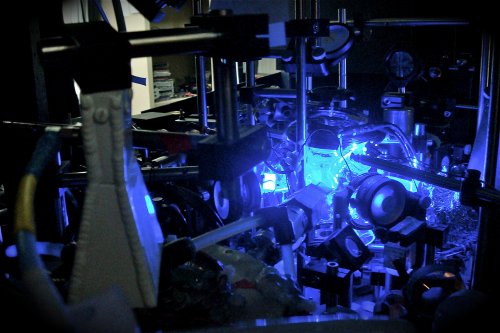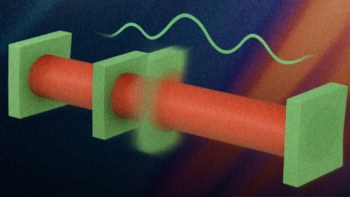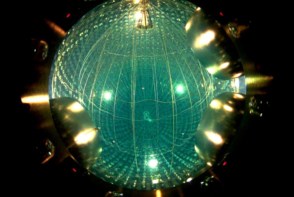Physicists in Italy have gained two important insights into Efimov states — in which three or more atoms form bound states, even though pairs of the same atoms do not bind together.
Massimo Inguscio and colleagues at the University of Florence have made the first Efimov trimers that contain two different species of atoms. A separate team led by Inguscio has also made the first measurement of the energy spectrum of a trimer comprising three identical atoms.
In 1970 the Russian physicist Vitali Efimov calculated that three particles should form quantum states that are loosely bound together — despite the absence of bound states of any two pairs of particles in the system. This counterintuitive situation only occurs for particles that are bosons; that is, atoms that have integer values of intrinsic angular momentum, or spin.
Curiosities no more
Efimov states remained theoretical curiosities until the mid-1980s, when physicists began to discover “halo nuclei”. These comprise a compact nuclear core loosely bound to a halo of one or more neutrons (or protons). Conventional nuclear physics calculations say halo nuclei should not exist, so some physicists suggested that certain haloes may be Efimov states. But because halo nuclei are very short-lived and difficult to study, researchers have been unable to confirm this theory.
Then in 2006 researchers in Austria spotted the first experimental evidence for an Efimov trimer in an ultracold gas of atoms — confirming Efimov’s theory, and giving further credence to its application to halo nuclei. Two years later, the same team discovered the first Efimov quartet, suggesting that the theory also applies to four or more atoms.
Now Inguscio, Giovanni Barontoni, Francesco Minardi and others have spotted the first Efimov trimers made out of different atomic species in an ultracold gas. They looked at a mixture of potassium (K) and rubidium (Rb) atoms in a magnetic trap that is cooled to a few hundred nanokelvin. The mixture is exposed to a magnetic field that causes a short-range interaction between atoms of different species — but not between the same species.
Introducing KRbRb and KKRb
The team adjusted the strength of the “interspecies” interaction energy by changing the magnetic field and found that found that trimers are formed at certain energies. They know this because unlike individual atoms, trimers are not held by the trap and are lost to the experiment. By carefully measuring how many K and Rb atoms are lost in this process, the team concluded that two Efimov trimers were being formed: KRbRb and KKRb.
According to Barontoni, this first sighting of “heteronuclear atomic” trimers strengthens the idea that the Efimov effect is behind halo nuclei because such nuclei comprise two different types of particles: neutrons and a nuclear core.
Elswhere in Inguscio’s lab, Matteo Zaccanti, Giovanni Modugno and colleagues have found the best evidence yet that an Efimov trimer has a spectrum of different energy states — as predicted by theory.
The team used laser cooling and trapping techniques followed by evaporative cooling to create a Bose Einstein condensate of potassium atoms held at just 100 nK. By changing an applied magnetic field, the team adjusted the interaction energy between the atoms and kept a close watch on how many atoms were lost from the trap. Their results show that trimers form at two distinct energies — which they say are two energy states of an Efimov trimer.
‘Important results’
Hanns-Christoph Nägerl at the University of Innsbruck described the two experiments as “very nice and very important results”. Nägerl, who was part of the team that first spotted Efimov trimers in 2006, added that the work provides important insights into how the Efimov effect could occur in halo nuclei, and how trimer energy levels could be structured.
Massimo Inguscio told physicsworld.com that the lab plans to create an optical lattice of crisscrossing laser beams in which each lattice contains just one Efimov trimer. In the current experiments the trimers decay rapidly because they interact with other atoms in the gas. However, trimers isolated in lattice sites could stick around long enough for the team to study them using a radio-frequency probe. This could, for example, allow the physicists to detect higher-order Efimov energy states.
Another avenue of exploration could be the creation of Efimov states from three different atomic species.
The research is published in Physical Review Letters and Nature Physics.




